Most Cebuanos my age grew up with a saying that goes “Bisan saging, basta loving.” This saying means that even when the family is eating bananas all the time, as long as they love each other, the family is okay.
The passage, Proverbs 15:17, “Better a meal of vegetables where there is love than a fattened calf with hatred” reminds me of that old saying. It also reflects on the situations CSC’s children came from. Not the whole, but the part about bananas and hatred. The kids at CSC have come from different situations of poverty, neglect, abuse, and abandonment. Some of the kids came from loving situations that deteriorated because one parent died suddenly. The one parent left behind could not cope up with trying to earn a living while taking care of the children at the same time. Some of the kids came from broken families. Most of them were abused before being cast aside when a parent got involved in a new relationship.
Bisan saging basta loving. Better a meal of vegetables where there is love than a fattened calf with hatred. Some of these children did not have anything at all, no bananas, no vegetables, no fattened calf, no one to turn to, and most of all, no love, but had an abundance of hatred at times.
Kindness, understanding, patience, hope, faith, joy, grace, and most of all, love. This brings to mind that this is what CSC is all about. It is not because of the beautifully maintained houses, medical building, and school, nor the playground and other things, though all of these have helped. But, it is the people that made the shelter what it is. Feelings of warmth and welcome are created by people who are kind, generous, patient, hopeful, understanding, even-tempered, and most of all, loving. Different backgrounds, educated to the less educated, Americans and Filipinos, people who answered God’s call to pray, give generously, volunteer their time during mailings, and serve on the CSC Boards both here in Cebu and in the US. They came together to serve in a ministry that not only provided a roof over the heads of these children, but the loving-kindness and the grace of God that the children had not experienced before.
At CSC, there is no “bisan saging basta loving,” and “no better a meal of vegetables where there is love than a fattened calf with hatred.” CSC is a big home, a big family that God has blessed with His love and grace. Thank you Lord for the people who answered Your call to serve in this ministry.
Who is the teacher?
Teacher Kristen is new to the CCHS team and we are so glad she is with us. Read on to find out what lesson she learned in her first few weeks on the job.

This is my first year ever teaching and I am so glad to be at Cebu Children of Hope School! The things they taught me in college have prepared me for the classroom, but only to a certain point. I've been struggling a bit with new routines and new students. I have tried many of the strategies I learned in college to help students focus in class but they haven't helped much.
I remember when I was a student like them. School was tiring for me as I had to sit most of the day and just listen to the teacher. Not very fun. When I started teaching this year I realized I was doing the same thing my past teachers did, things that made me, as a student, bored. In the first few weeks of school my students at CCHS taught me that I was too idealistic when it came to teaching. They taught me that I needed to cool down and start embracing their unique qualities.
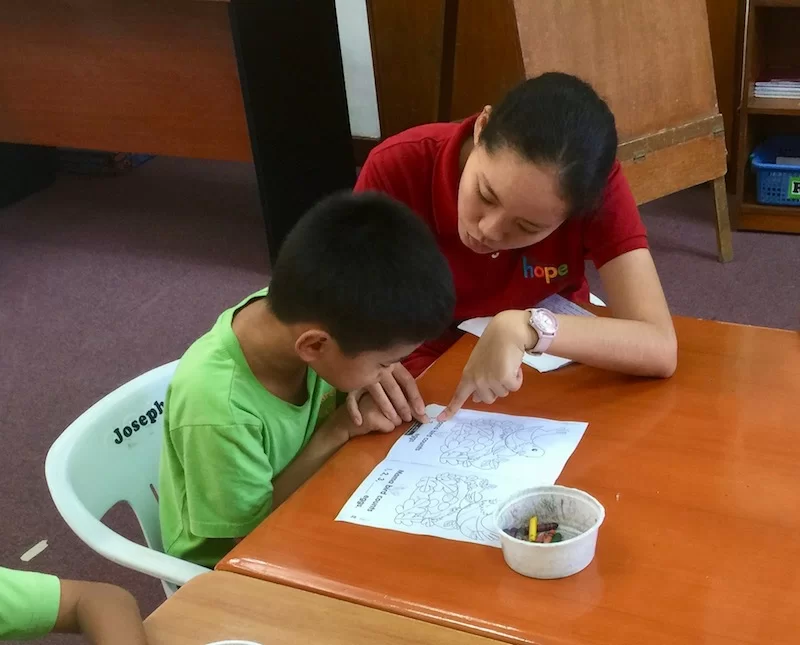
Once I realized this I made some changes in my classroom. I started to really listen to them and smile more. Very quickly I saw changes in their behavior. Now I am having fun teaching them and I love how they respond in class- showing excitement to learn!
Teachers are supposed to be the ones to teach kids. At CCHS I have learned that often kids can be great teachers.
Preschoolers and Plants
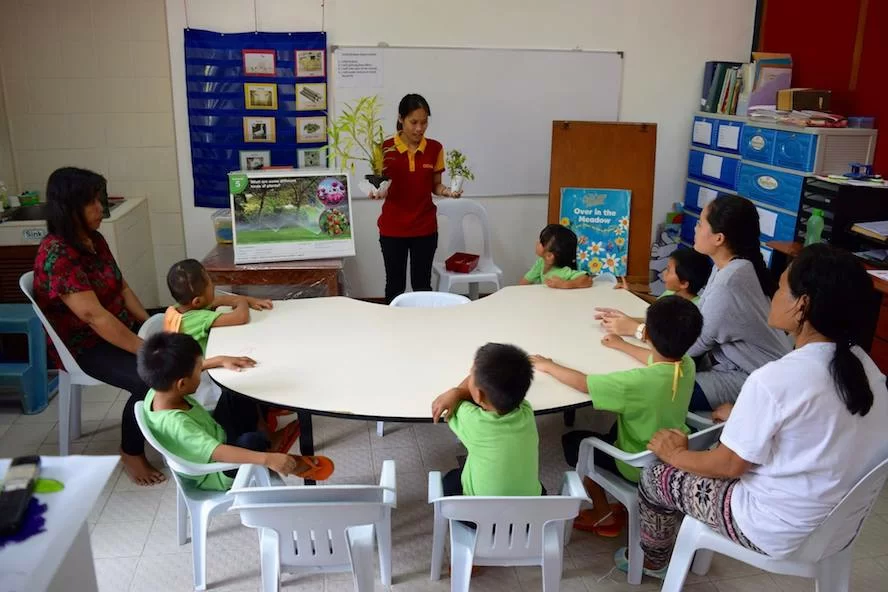
The preschoolers have been learning about the difference between living things and nonliving things. One example of a living thing, which we have been studying a lot about, is a plant. Every time I review with the children they say, "Sige ug balik" (It's a repeat). By the end of the unit the preschoolers were able to identify a plant, tree, shrub, vegetable, and grass. They also learned the parts of the plant (stem, flower, fruit, and roots) and where plants live (in desserts, farms, forests, and gardens).
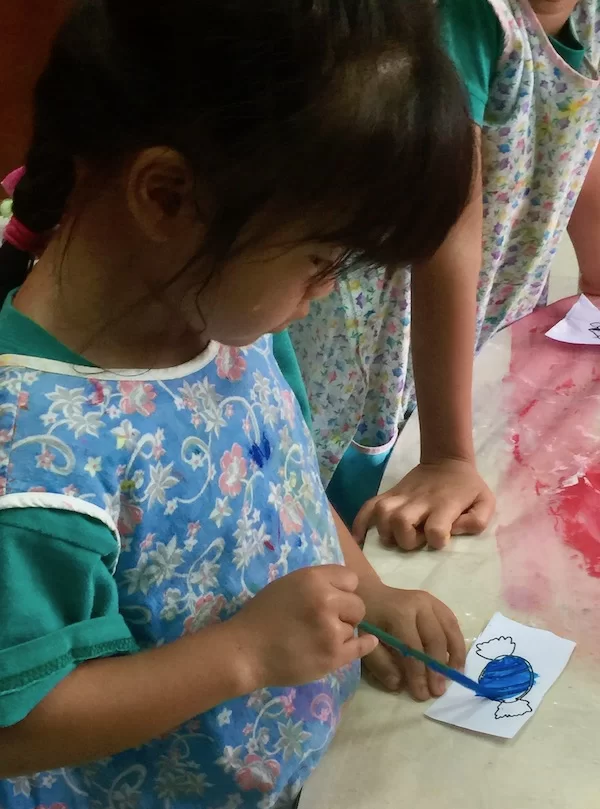 One of my favorite parts of the unit was taking the preschoolers outside for a mini field trip. Our school is surrounded by many different kinds of plants. On our "living things walk" we saw many banana trees, mango trees, and even an avocado tree. The preschoolers loved searching for living things and telling us what they found.
One of my favorite parts of the unit was taking the preschoolers outside for a mini field trip. Our school is surrounded by many different kinds of plants. On our "living things walk" we saw many banana trees, mango trees, and even an avocado tree. The preschoolers loved searching for living things and telling us what they found.
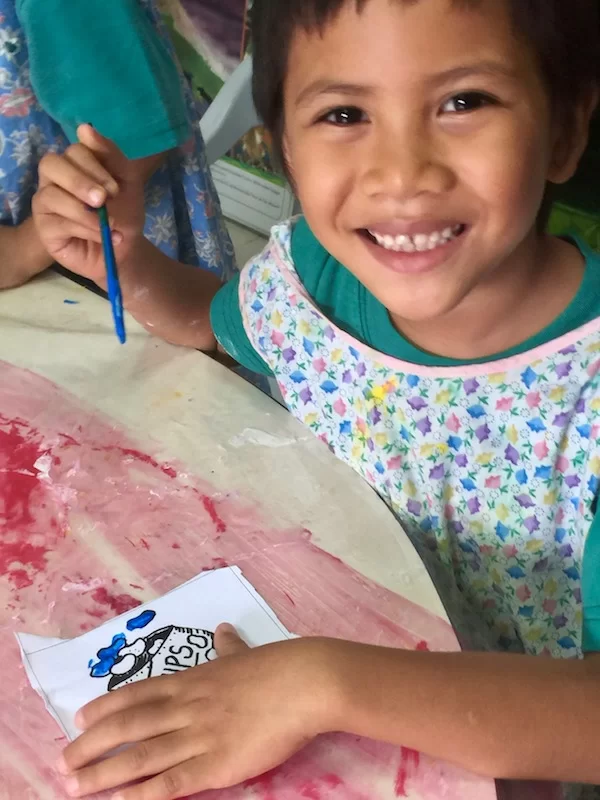
What a joy it was teaching the preschoolers about plants. We had a fun time learning together!
Creative Minds
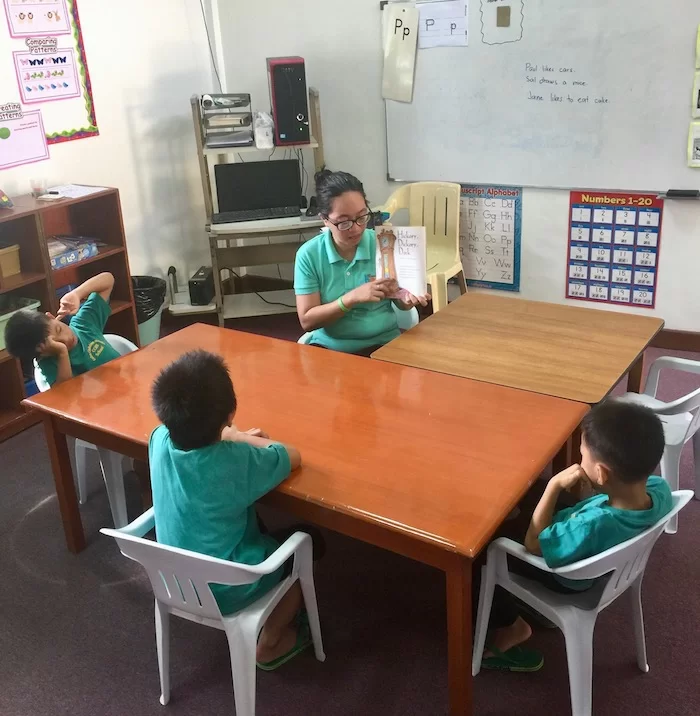
Having conversations with my students helps them learn to interact with their peers and teachers. It has a great impact on their learning and ability to listen as well.
I started this year with just three kids in my classroom. Three kids who love conversation and enjoy sharing their thoughts. One afternoon, during Civics class, one of my students shared with me about one of the CSC aunties (child care workers).
Student 1: Teacher, our auntie just had a baby! (saying it excitedly)
Me: Wow, that's great! Do you know if the baby is a boy or a girl?
Student 1: I don't know.
Student 2: Teacher, I know where the baby comes out.
Me: Where?
Student 2: Here! (referring to his bottom)
Student 1: No Teacher! I heard that a baby comes out from your belly button.
Student 3: Teacher, I know where babies come out of, here in our back.
Student 1: (reacting with a shocked face) No, the baby can't come out of there!
Me: Why?
Student 1: Because our back has a lot of bones. The baby will get hurt!
I love teaching at Cebu Children of Hope School for many reasons. One of them is the creative minds these little children have. You never know what ideas they will share.
Goodbye Up There!
Child welfare types refer to children who become very close while in care at a place like CSC as "institutional siblings." They are not siblings by blood but by affinity. Many of our children experience that kind of relationship while living at CSC. For the younger ones, they don't understand the difference. Such was the case with little Jacob. He had four very good buddies in the Eicher Home nursery. They spent lots of time together eating and playing. They looked out for each other, fought like true siblings and were known to tattle on each other on occasion.
Recently, Jacob was adopted by a great family from Europe. Shortly before Jacob's family came to get him, two of his pals got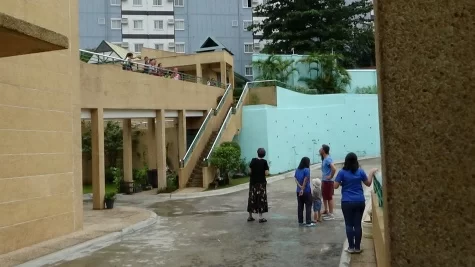 sick and had to be in isolation. Their ailment was very contagious. We worried that Jake, too, would get sick when he was supposed to travel but, thankfully, that didn't happen. But we felt bad that Jake wouldn't be able to say goodbye to his buddies. So Marlys came up with a plan. The infirmary caregivers brought the sick children outside to the bridge and Jake was able to look up, see them and say goodbye. The overhead kids shouted "bye-bye" and it was very touching. Certainly they didn't understand that he was going far away and they might never see him again. But they knew something big was up.
sick and had to be in isolation. Their ailment was very contagious. We worried that Jake, too, would get sick when he was supposed to travel but, thankfully, that didn't happen. But we felt bad that Jake wouldn't be able to say goodbye to his buddies. So Marlys came up with a plan. The infirmary caregivers brought the sick children outside to the bridge and Jake was able to look up, see them and say goodbye. The overhead kids shouted "bye-bye" and it was very touching. Certainly they didn't understand that he was going far away and they might never see him again. But they knew something big was up.
There is lots of love at CSC. Jacob experienced that from house parents, child care workers, staff and the other children. Now he will be feeling the love of a family. And a new sibling that will be his forever.
Science Can Be Funny
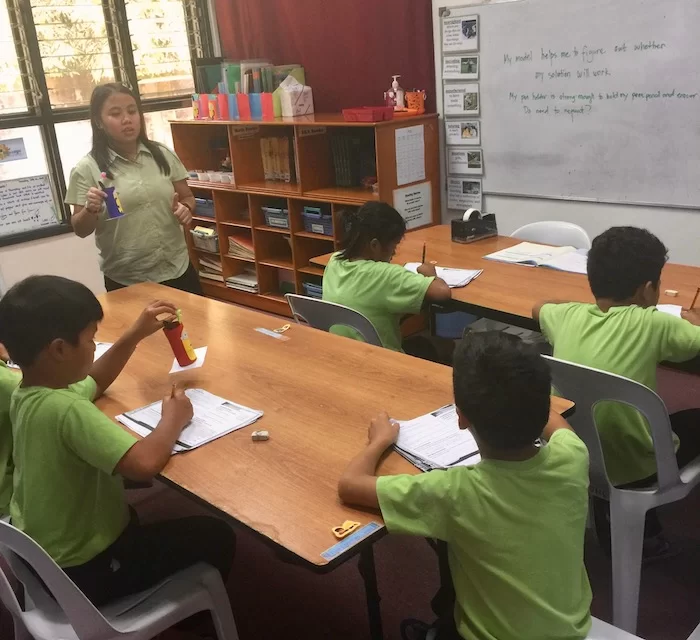
The official school year has begun at CSC! Teacher Lyrah, one of our dedicated and gifted teachers, shared about a science lesson she taught the other day:
Everyone was ready and calm as I stepped into the classroom. The students seemed very excited for the afternoon's discussion entitled "The Scientist and the Science tools."
I asked my students about the science tools and the brainstorming happened like this:
TEACHER: Can you still remember some of the science tools that you learned about last year in your class?
STUDENTS: Yes, Teacher Lyrah!
TEACHER: Tell me about one of those science tools.
STUDENT 1: Teacher, a hand lens.
STUDENT 2: How about a balance?
STUDENT 3: A measuring cup.
STUDENT 4: Thermometer!
TEACHER: WOW! You are really thinking about these tools. What are some others?
I called on one student who hadn't answered yet.
TEACHER: Okay, what is it?
He was very hesitant about his tool and just smiled again.
STUDENT 5: Teacher, how about a telecopter?
He was laughing so hard because he mentioned the tool in a different way. Everyone in the class was puzzled about his answer.
STUDENT 1: What do you mean a telecopter?
Student 5 laughed so hard and kept on saying the word telecopter.
STUDENT 5: (laughing) Teacher, what I mean is a telescope not a telecopter!
TEACHER: A telecopter? That word is a combination of a telescope and a helicopter. Isn't it?
He laughed and said: " Yes, teacher because we use a telescope to see the stars and other flying objects like helicopters."
Then I remembered the time last year when I showed them a telescope and we talked about how it worked.
Everyone in the classroom was amazed with his great new word invention!






